How to Build a Website Like Turo
Not a lot of places let you rent private cars like the online car-sharing marketplace Turo. This guide will show you what it takes to design, build, and scale your marketplace like Turo.
In 2009, on a snowy day in Boston, Turo founder Shelby Clark had an idea. He was riding his bicycle through the city to a car rental over two miles away and wondered why he couldn’t just rent any of the numerous vehicles lying away in car parks he saw along the way.
That’s when the idea for a marketplace built for people to rent out their own cars hit him. But it wouldn’t be until a year later he would launch Turo as ‘RelayRides’. The reason it took so long from idea inception to launch was the not-so-simple topic of insurance.
After eventually finding an underwriter willing to insure car rentals, he went straight to work and launched Turo in June of 2010. 13 years later, Turo—founded in America—now operates in 5 countries including the United States, the United Kingdom, France, Australia, and Canada. Turo’s current private-market price is pegged at $1.28 billion, almost doubling its valuation from the previous year’s rounds.
If online marketplaces like Turo, Airbnb, and Fiverr have shown us anything, it’s that the marketplace model is highly scalable and can be applied to almost any area of business. Marketplace businesses are thriving because they don't require you to own any of the inventory exchanged or used to operate effectively. It’s no wonder the collaborative-economy industry has tremendous growth potential, with funding surpassing that of major social networks and a projected market size of $335 billion by 2025 according to PwC.
But building a successful marketplace in the billion-dollar collaborative industry is no easy task.
Self-starters and would-be founders must adopt the right strategy and be disciplined to achieve their marketplace goals like scaling their business or growing their user base. You’ll also need to understand the importance of launching your marketplace early, the need to prioritize user engagement, and what your personal motivations are for trying to start a marketplace.
All this ensures you take advantage of the booming marketplace industry.
Turo is an online car-sharing marketplace that allows people to rent cars from private owners.
The platform has made renting a car affordable and convenient for drivers and allowed car owners to make extra money from their assets, in addition to Turo’s robust interface and customer service, has made it one of the world’s most popular car rental services.
Everything from insurance, customer support, and communication between owners and renters is facilitated through the Turo site for a seamless exchange of car services between both parties.
Renters, once they have filled out the basic information needed to register on the platform, can start browsing for available cars listed by owners on Turo. They can filter for car type, location, etc, then go ahead to book it for a specific date.
Owners would have already registered and created listings for their vehicles on the Turo platform with specifics like location, availability, and price.
Once the booking request is made, owners can either accept or decline a request. Upon approval, the renter will have to pay the rental fee via Turo to confirm the booking.
The renter and owner agree on a location for pick up and drop off at the end of the rental period—Turo will always provide insurance coverage during this rental period. Once the rental is done the renter returns the vehicle following any instructions set by the owner.
After that, the process is complete and both parties can leave reviews for each other on Turo, so future renters and owners can gauge the ‘trustworthiness’ of the individuals. Turo will then release the rental fee minus service charges to the car owner.
Turo stays highly profitable by charging both renters and owners. Owners are charged a service fee on the rental fee they receive, and renters are charged a booking fee on the initial booking of a car. This is known as commission-based strategy and is one of the more popular business models for marketplaces.
For owners, this service charge is made up of marketplace fees and Value-Added Services Fees, these start from 7.5% each.
In the case of renters, a marketplace fee and Value-Added Services fee are also paid on each booking. The cut Turo takes from each booking typically ranges from 25–30% for value-added services and 25–35% for marketplace fees.
The Value-Added Services Fee covers protection services for guests (or renters) and items like reimbursement on physical damage to a vehicle, for hosts (or owners). There are also different tiers of hosts and this may affect the amounts to be paid in fees by owners.
1. Getaround: Getaround is a consumer-to-consumer car-sharing marketplace that lets users rent nearby cars, vans, and trucks. This online car-sharing service boasts over 5 million users in the 800 and counting cities it operates across the world.
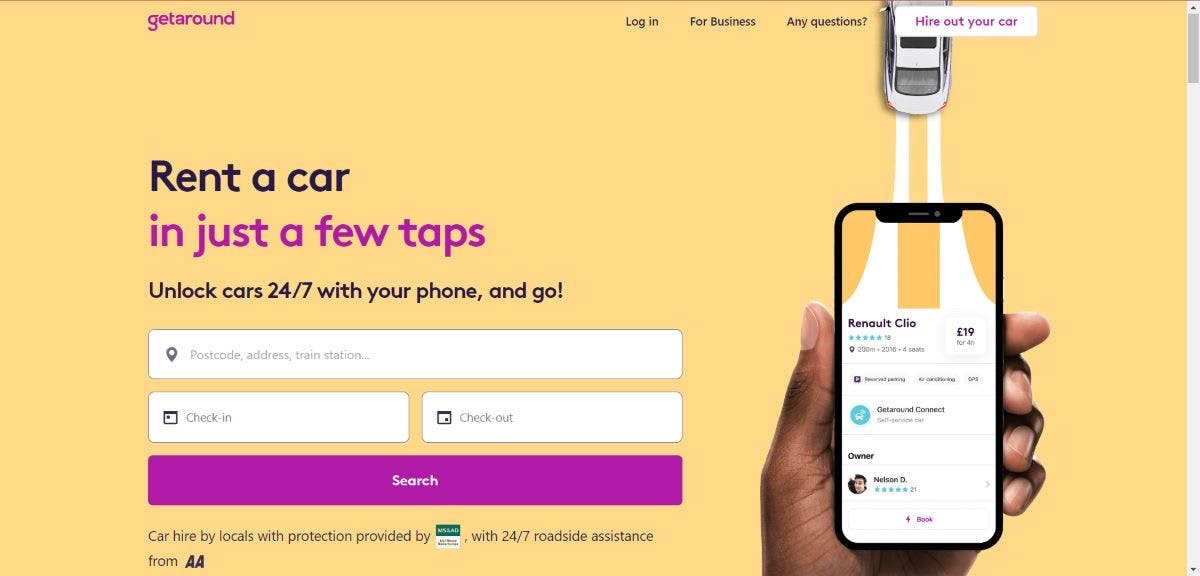
2. Outdoorsy: Outdoorsy is another successful vehicle-rental marketplace that specializes in larger vehicles. These include trailers, motorhomes, RVs, and campervans for outdoor adventures.
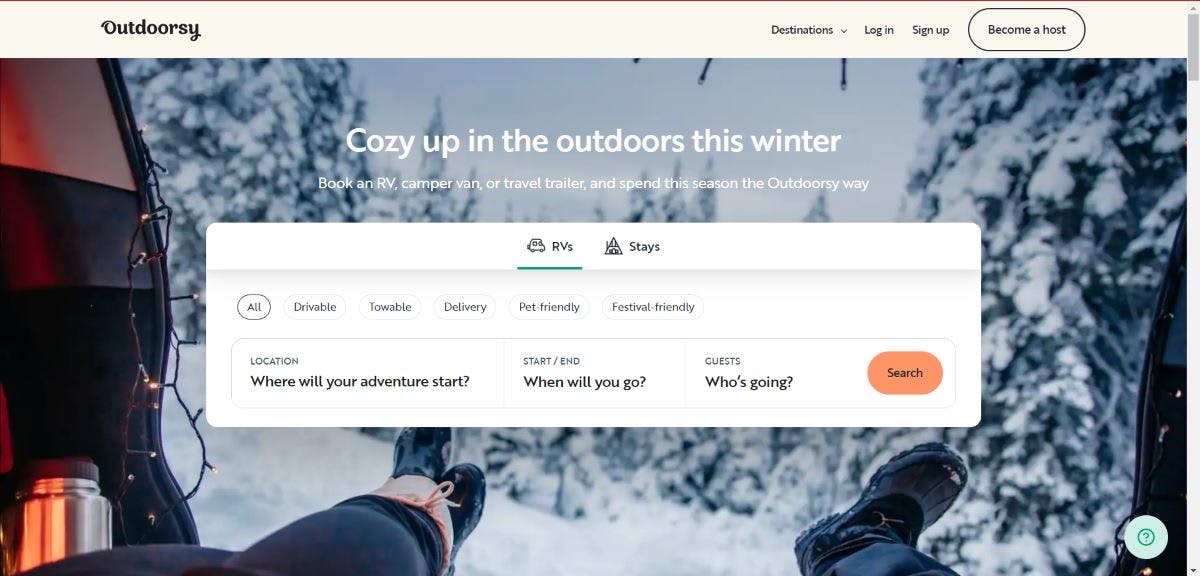
3. RVshare: RVshare is a marketplace for recreational vehicles (or RVs). This P2P marketplace connects owners and RV renters in the same local area. They have one of the widest selections of RVs for rent since it’s their sole product.
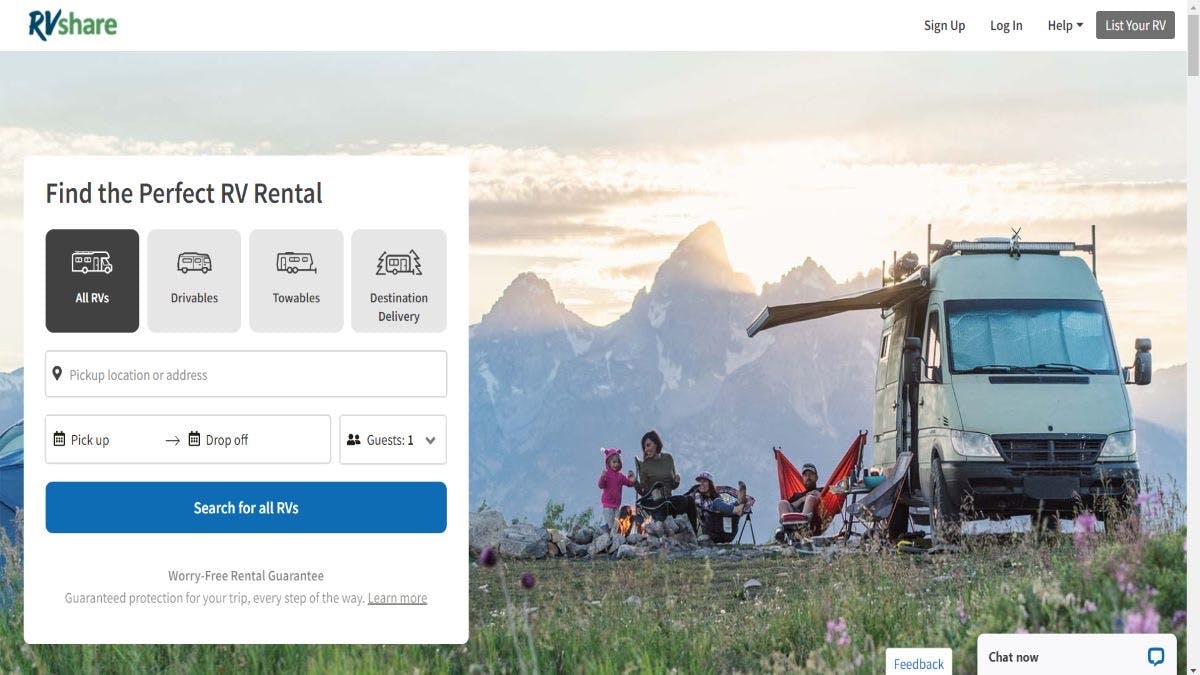
4. HyreCar: Founded by Anshu Bansal and Abhishek Arora in 2014, HyreCar is a marketplace for car-sharing and other vehicle rental-related services. These services include renting a car for Uber or just about any delivery service.
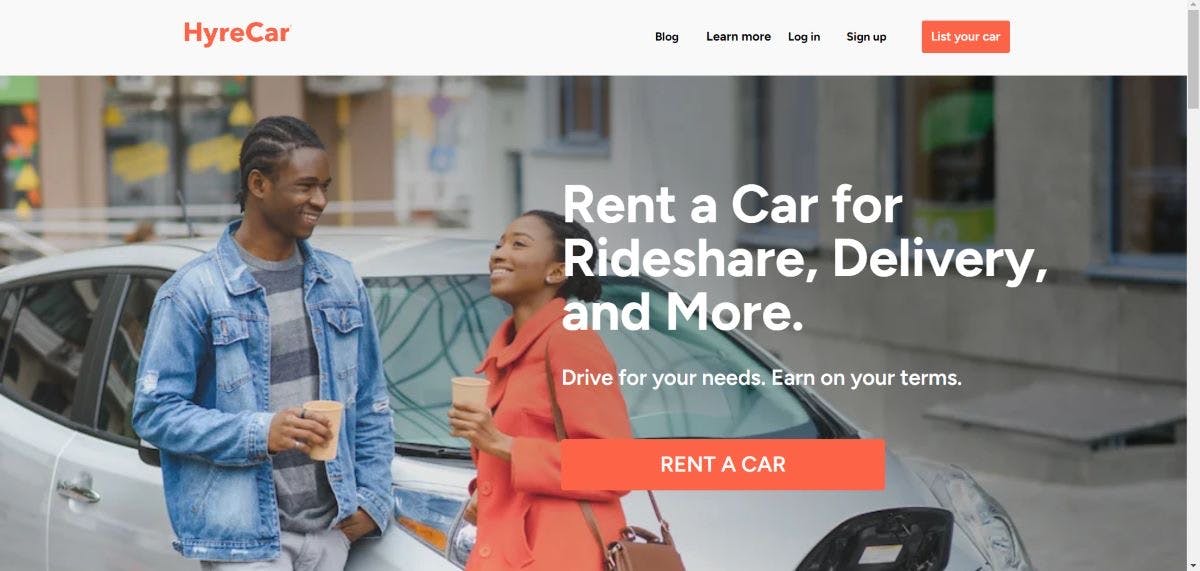
5. Zipcar: Zipcar is an American consumer-to-consumer car-sharing marketplace that lets members book cars by the hour or day. Vehicle reservations are billable by the minute, hour, or day and members may pay a membership fee separate from the car reservation charges to use the marketplace.
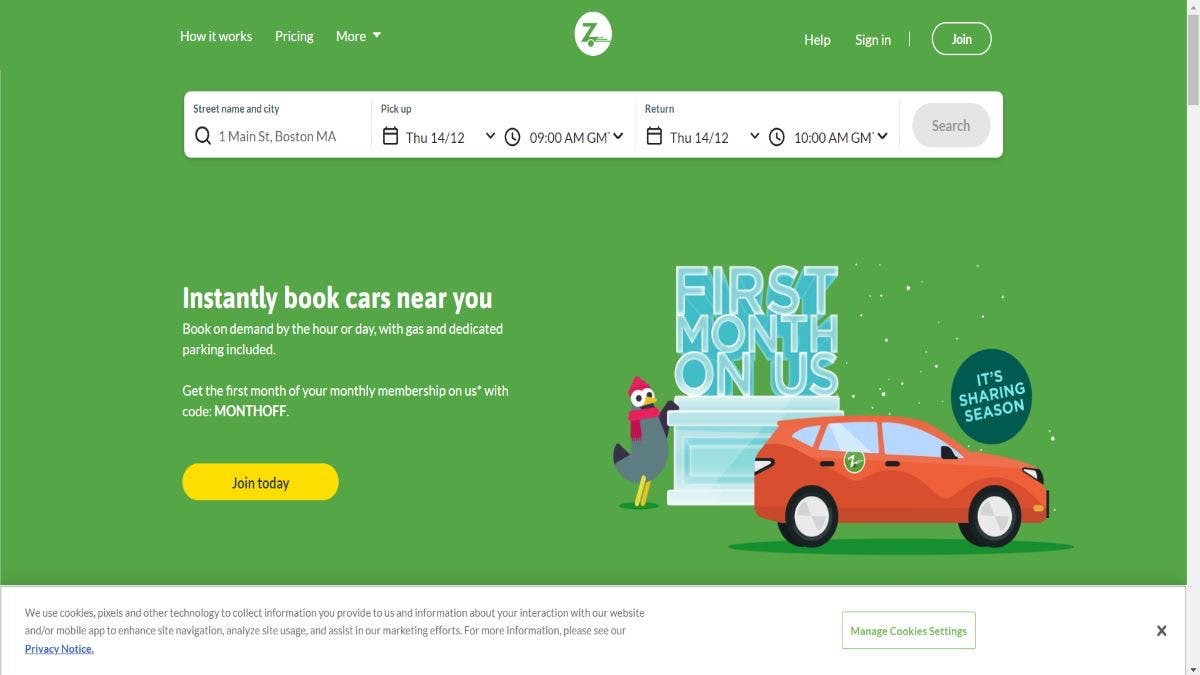
6. DriveShare: DriveShare is a car rental marketplace that took a unique angle to car-sharing—they only deal in classic cars. Owners can list their classic cars for users to book for days or even a couple of hours.
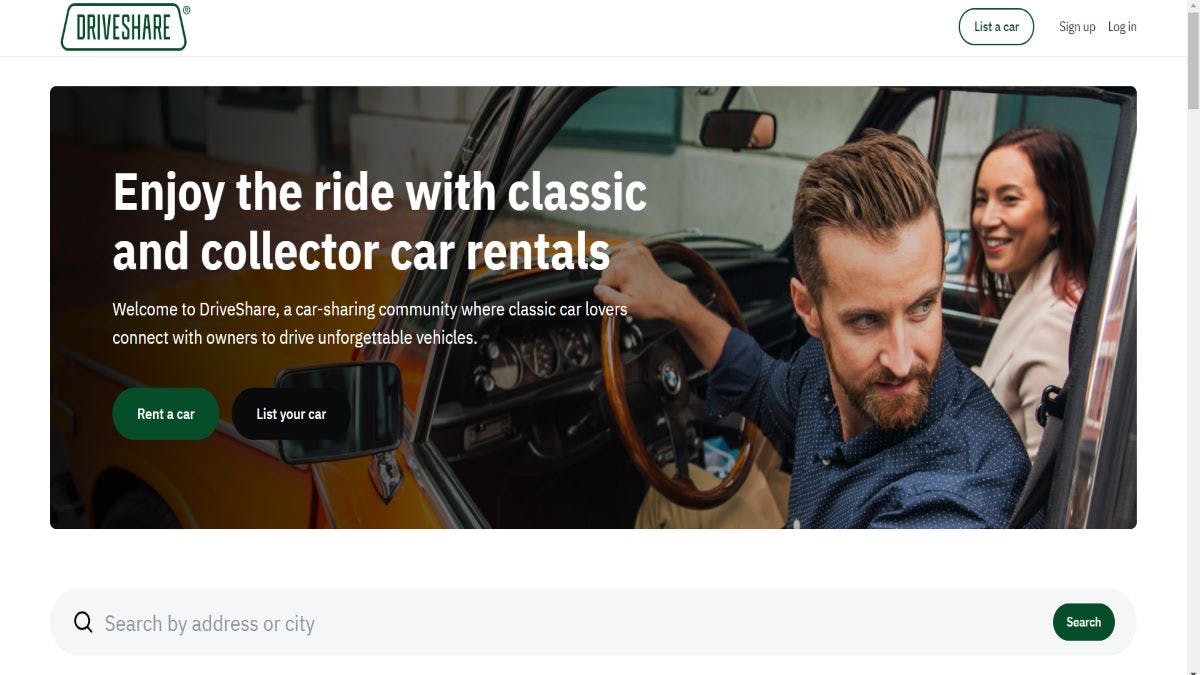
7. ShareNow (formerly Car2Go): ShareNow is a car rental marketplace formed from a merger between Car2Go and DriveNow in 2022. The car-sharing service used to operate in North America but now operates in the urban areas of Europe.
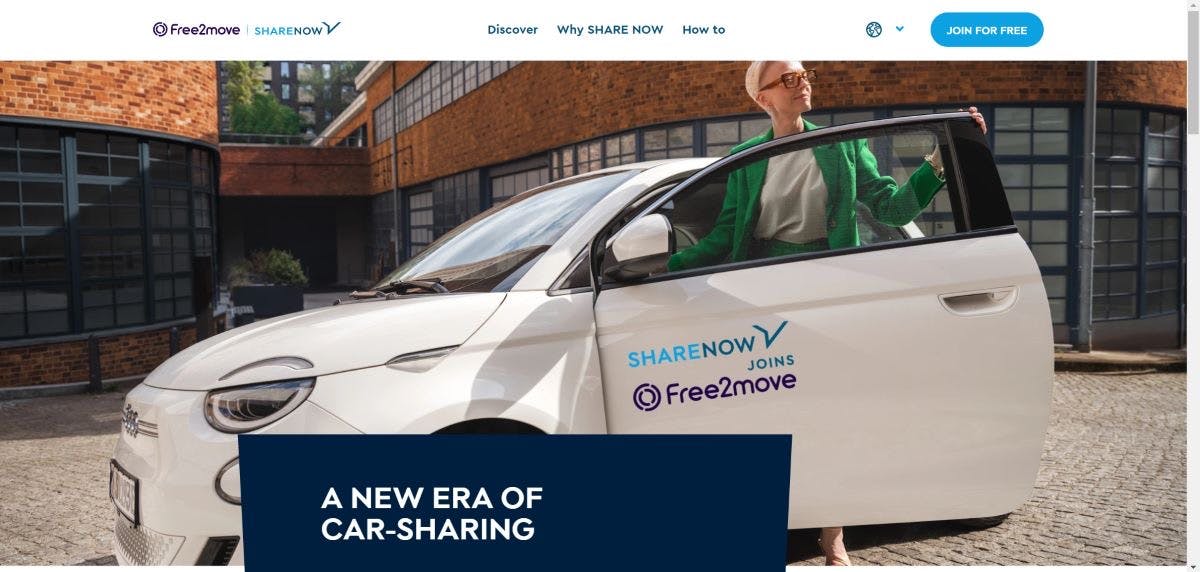
8. UcarShare: UcarShare is a car share program offering members convenient access to cars parked at locations all around the community. The platform is membership-based based meaning a subscription fee is necessary to enjoy this service.
Do you have an idea for a marketplace that works like Turo? Here are some steps you can take to start fleshing out the idea of your marketplace platform.
- Validate your marketplace idea: It makes sense to want to get straight to work and launch your marketplace concept as soon as possible. After all, you can only ever know if something will be successful after a real-world test. But before you invest a lot in building a platform, validate your marketplace idea. Otherwise, you may find yourself scrambling, wondering what exactly you got wrong. So before you start writing the code or hiring a team to bring your marketplace to life—you want to validate your assumptions. These assumptions center around customer discovery or knowing what problem your customers need solved, the business model you want to adopt, and more.
- Build your Minimum Viable Platform: Your Minimum Viable Platform is a minimal solution that answers the core needs of your users in a way other solutions cannot. After validating your assumptions and understanding your problem-solution fit from customer discovery, you want to reach product-market fit. Product-market fit means locating a market that’s big enough for your product that satisfies the market. So developing your MVP and testing the barest form of your platform out with early adopters will help you learn as you continue to build more functionality into your marketplace—essentially ensuring you learn and iterate all the way to launch.
- Build a user base: Now that your MVP has been created, the next step is finding your stable user base. This is a unique problem because you need users who supply and demand the service offerings on your marketplace. So you need customers for your supply and suppliers for your customers to get your marketplace off the ground. Here, you want to focus on trying to grow only one side of the marketplace first, to avoid confusion within the process. Often, the best side to start with is the supply. You can build your initial marketplace supply by using business directories and contacting providers already active in other marketplaces to persuade them to get on board.
- Find the right growth strategies: Building anything requires patience and a disciplined work ethic that helps you see through ideas from conception to launch and eventually into scaling upwards. This is especially true for marketplaces. First, understand that sustainable marketplace growth takes time. Find the growth tactics that work for your business model. You want to test different growth strategies quickly and efficiently since there is a lot you can choose from. You can choose and test out your top picks from strategies like SEO and viral marketing to land on one that moves you closer to your growth goals.
- Learning and iterating as you grow: Once you’ve established a growth strategy that lets you grow at the pace you want, don’t rest on your achievements, the work isn’t done. Launching with the bare minimum features is your best bet, but once you start seeing growth you’ll need to differentiate your value proposition or offering from the rest of the market—with powerful tools that provide value to your users. Your users should decide what direction these features and new developments take. Listening to them by conducting interviews and tracking their behavior will give you an idea of what functionality truly matters to them. If you can commit to constantly learning and improving what you’ve built, you will always be able to provide value to your niche.
Your Turo-styled website can be built in several ways.
These are:
- Build a marketplace from scratch: You can completely build your marketplace app from the ground up, writing all the code yourself and undertaking the entire design process. Using this method will mean you get a marketplace that is 100% customizable at any time since you have the source code. The other side of this is the fact it is a huge undertaking. You will spend a lot of resources, usually time, money, and effort, to get everything right. Weighing the risks and rewards is vital before trying to build from scratch.
- Build a marketplace with WordPress: WordPress offers affordable monthly pricing for entrepreneurs to use plugins to create the marketplace platform they want. You get to choose the plugins and themes for your marketplace, activate and configure them to your specific tastes, and launch, all within a short timeframe. The downside to building with WordPress is the initial time investment required and the need for more technical skills to maintain this kind of setup. Regular in-depth research to handle installation, configuration, and maintenance work is also required.
- Build a marketplace on top of open-source software: There are marketplace solutions that can be downloaded for a one-time fee, tweaked, and later hosted on your own server. This method offers a cheaper alternative to building from scratch. The major issue is you’re still going to need a ton of development work to build and maintain it properly, so developer experience may not be up to standard. You’ll likely end up spending more time on building and maintaining your platform than you expect.
- Build with a combination of no-code tools: Using a mix of no-code tools to build out your platform can give you more freedom to decide how your platform works without the need for development skills. You get to pick the most suitable functionality from each no-code tool to arrive at a customizable marketplace structure. Note however that the learning curve for this method is steep since you have to know how every single tool works, and this can lead to a longer time to launch and quite a bit of maintenance work required.
- Build with a dedicated no-code marketplace SaaS tool: Unlike using various no-code tools, building with a dedicated SaaS tool lets you validate your idea in no time. The dedicated no-code marketplace tool will have all you need in one place, allowing you to launch your product faster than any of the other methods. However, since the dedicated tool is a one-size-fits-all, the customization capabilities might be limited. This is why choosing the marketplace software tool that works for you is necessary to enjoy all the benefits of a quick and easy launch without limitations.
- Develop a marketplace on top of an API-based marketplace SaaS tool: API-based marketplace tools usually take charge of core marketplace functionality. What this does is allow you to fully customize your marketplace without spending the extra time needed to build features that don’t need to be specific fits. This method offers the launch speed of a no-code SaaS tool without trading off customizability and scalability. It still requires more technical skill, money, and time than any no-code tool. API-based marketplace solutions that offer access to global developer partners can help you get the custom marketplace of your dreams without the restrictions of upskilling.
It’s up to you to decide your suitable marketplace development approach based on the constraints of your resources and the features your Turo-style marketplace needs. Whether that means launching on time, saving money, or prioritizing customizability—choose the option that lets you keep growing by learning from your users.
Sharetribe has worked for a long time to refine a marketplace solution that lets founders launch fast and grow and scale their businesses without limits.
Sharetribe’s no-code marketplace builder is made to launch marketplaces like Turo extremely fast. When you’re ready to expand, you can develop unique functionality on top of the no-code features. You can add unique designs and workflows, integrate third-party services, or build a mobile app – by yourself or with help from our vetted developer partners.
We’ve helped founders build successful marketplaces for over a decade. Here are examples of Sharetribe-powered platforms similar to Turo.
Drive Lah is a peer-to-peer car-sharing marketplace that serves the Singaporean and Australian markets. Renters can choose from a wide selection of nearby cars that are all fully insured. The team has successfully raised millions in funding to grow their business.
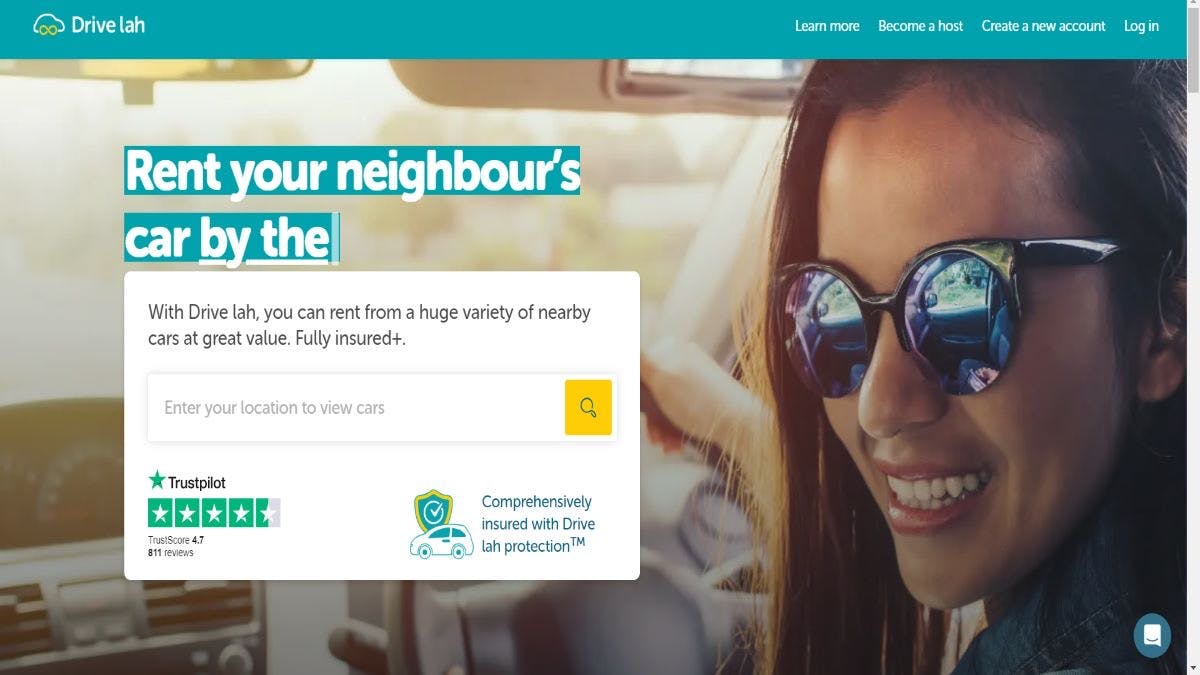
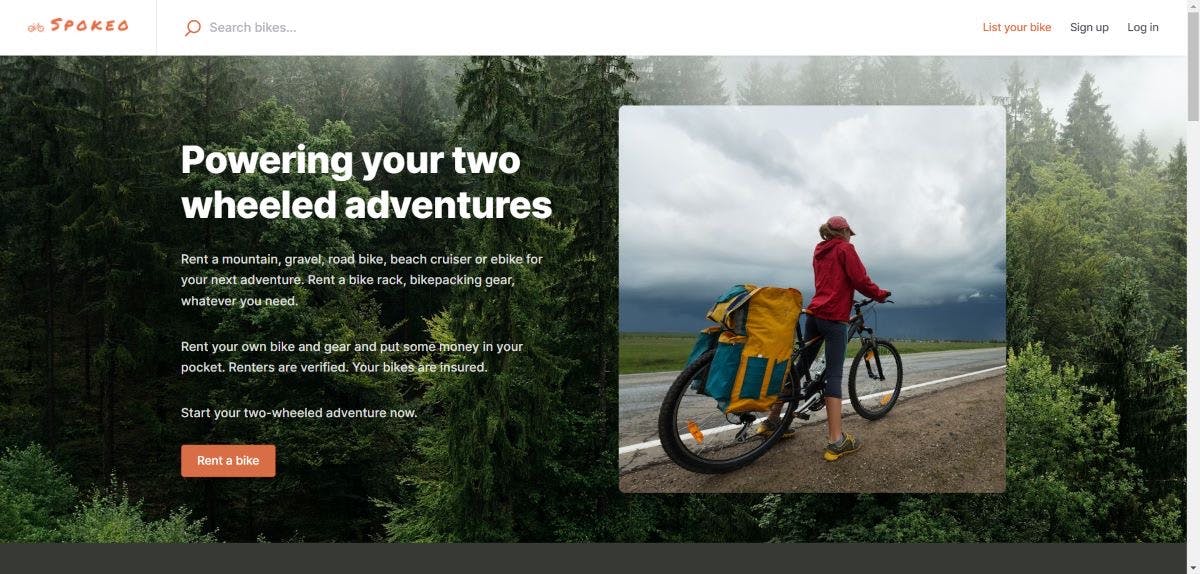
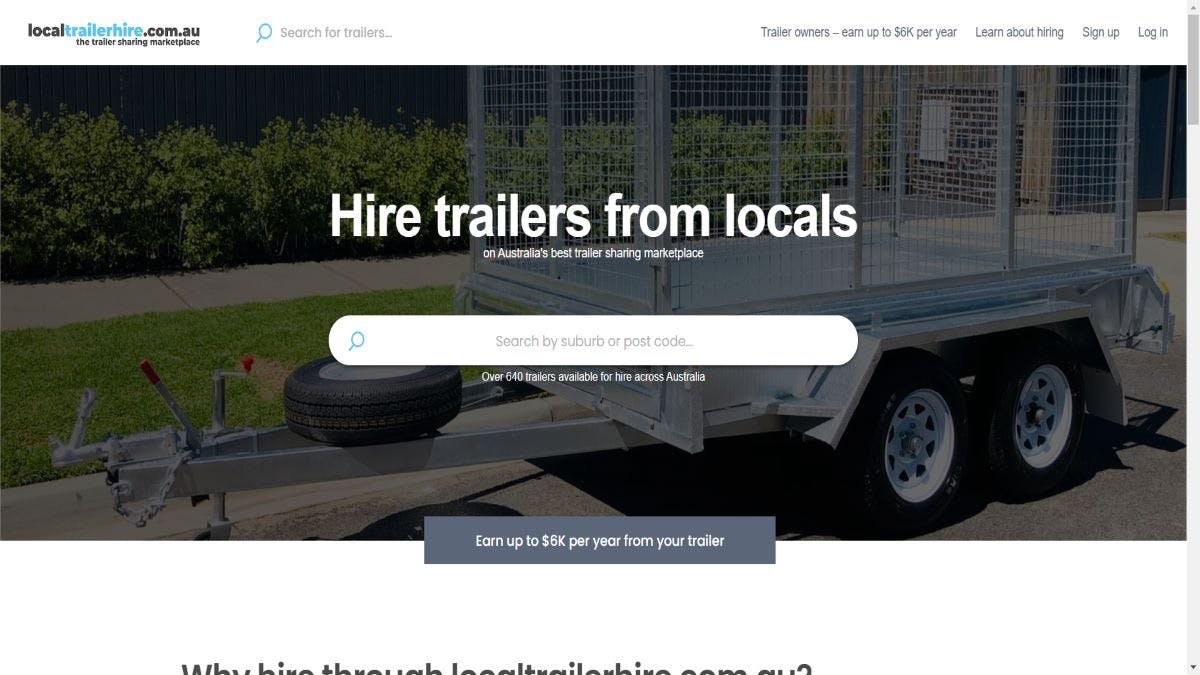
Want to read more about the steps of building a marketplace? Check out our guide on How to start an online marketplace. It provides expert advice that you can start applying, no matter how you choose to build your marketplace.
Good luck with your marketplace business and see you soon!
- How to build a website like Airbnb
- How to build a service marketplace
- How to build a two-sided marketplace
- How to build a B2B marketplace
- How to build a peer-to-peer (P2P) marketplace
- How to create a multi-vendor marketplace
Start your 14-day free trial
Create a marketplace today!
- Launch quickly, without coding
- Extend infinitely
- Scale to any size
No credit card required
